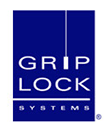Industry News
NEMA Publishes Guidelines On The Application Of Dimming To High-Intensity Discharge Lamps
March 01, 2011
The National Electrical Manufacturers Association (NEMA) has published LSD 14 Guidelines on the Application of Dimming to High-Intensity Discharge Lamps. This white paper, last published in 2002, was produced by NEMA’s Lamp Section.
LSD 14 provides guidance on the application, combination, and practice of dimming of high-intensity discharge (HID) lighting systems. The three technologies discussed are high-pressure sodium, metal halide, and mercury vapor, each of which responds differently to manipulation.
This revision incorporates additional systems and updates the recommendations for dimming in terms of output and the systems employed.
“By reducing the power to lighting systems, owners and users may achieve considerable energy savings,” said Pamela Horner of Osram Sylvania, a member of the Lamp Section. “While dimming of HID lighting systems is an excellent energy savings strategy, these systems can present unique performance challenges. LSD 14 offers clear recommendations for dimming of various HID systems that ensure both energy savings and satisfactory performance.”
Ideal applications for energy-saving HID dimming systems include parking garages, warehouses, shipping docks, streetlights, supermarkets, ball fields, factories, and security lighting. They are often used in conjunction with daylight lighting systems.
LSD 14 may be downloaded at no charge by visiting www.nema.org/stds/lsd14.cfm.
This publication joins around 40 other white papers in the NEMA LSD series, which covers a range of lighting topics. Other parts of the series cover subjects like ballast disconnects, occupancy sensors, and photoluminescent exit signage. To view a comprehensive list of NEMA LSD white papers, go to www.nema.org/stds/lsd.cfm.









































